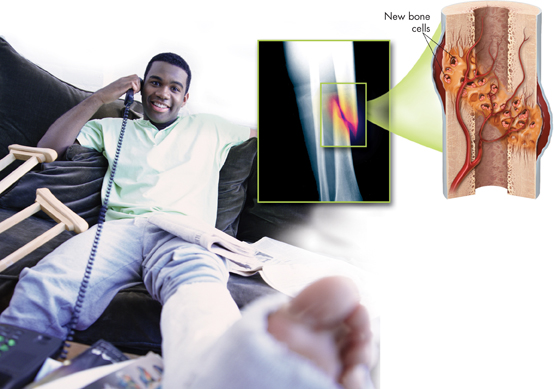Regulatory Proteins The discovery of cyclins was just the start. Scientists have since identified dozens of other proteins that also help to regulate the cell cycle.  The cell cycle is controlled by regulatory proteins both inside and outside the cell.
The cell cycle is controlled by regulatory proteins both inside and outside the cell.
▸ Internal Regulators One group of proteins, internal regulatory proteins, respond to events occurring inside a cell. Internal regulatory proteins allow the cell cycle to proceed only when certain events have occurred in the cell itself. For example, several regulatory proteins make sure a cell does not enter mitosis until its chromosomes have replicated. Another regulatory protein prevents a cell from entering anaphase until the spindle fibers have attached to the chromosomes.
▸ External Regulators Proteins that respond to events outside the cell are called external regulatory proteins. External regulatory proteins direct cells to speed up or slow down the cell cycle.
MYSTERY CLUE

How might regulatory proteins be involved in wound healing in the salamander?
One important group of external regulatory proteins is the group made up of the growth factors. Growth factors stimulate the growth and division of cells. These proteins are especially important during embryonic development and wound healing. Other external regulatory proteins on the surface of neighboring cells often have an opposite effect. They cause cells to slow down or stop their cell cycles. This prevents excessive cell growth and keeps body tissues from disrupting one another.
 In Your Notebook Use a cause-and-effect diagram to describe how internal and external regulators work together to control the cell cycle.
In Your Notebook Use a cause-and-effect diagram to describe how internal and external regulators work together to control the cell cycle.
ZOOMING IN
CELL GROWTH AND HEALING

FIGURE 10–14 When a person breaks a bone, cells at the edges of the injury are stimulated to divide rapidly. The new cells that form begin to heal the break. As the bone heals, the cells stop dividing and growing.
Table of Contents
- Formulas and Equations
- Applying Formulas and Equations
- Mean, Median, and Mode
- Estimation
- Using Measurements in Calculations
- Effects of Measurement Errors
- Accuracy
- Precision
- Comparing Accuracy and Precision
- Significant Figures
- Calculating With Significant Figures
- Scientific Notation
- Calculating With Scientific Notation
- Dimensional Analysis
- Applying Dimensional Analysis




